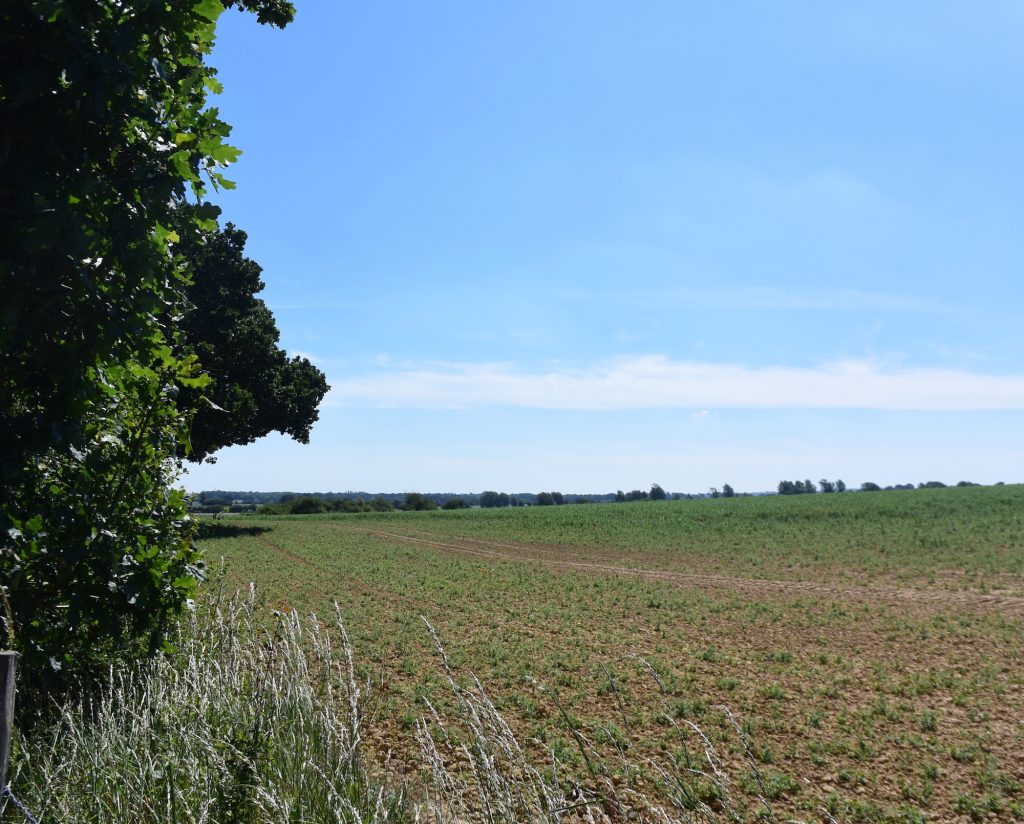This post on Saxon Kent at the time of King Alfred is adapted from my book, King Alfred: A Man on the Move, available from Amazon.
The Anglo-Saxon Chronicles tell us that in 893 Alfred camped with his army between the two raiding armies and therefore it would have been between Milton Regis on the north coast of Kent and Appledore towards the south coast of Kent. Anyone who travels around Kent will soon appreciate how difficult it would have been to monitor these distant locations from a single site. I therefore feel that any central camp must have had additional outposts in order to monitor what was going on over a wide area. This would fit with the Anglo-Saxon Chronicles telling us that burga (fortresses), noting the plural, were being held by Alfred.
Maidstone, a location that has been put forward, is considered separately in this other post. I now continue with a few others, ending with the locations that I believe to be more plausible.
The village of Bredgar, just south of the M2 motorway has been suggested. The village has a lovely church yard, and is somewhat elevated. However, I could see no special reason to consider that this was Alfred’s main camp, although it could have been one of potentially many outposts. Bredgar lies close to a line drawn between Appledore and Milton, but it is very much closer to the latter, making it an awkward fit with the description of King Alfred being between the two raiding armies.

Stockbury, just a few miles west of Bredgar, has also been put forward, although the earthworks there are thought to be Norman, and therefore more recent than King Alfred’s time. However, it is possible that the Norman construction may have been built over earlier earthworks, and this may be supported by the possibility that part of the name may derive from the Old English burh (stronghold).

To find these earthworks it is easiest to find the church first, which is located a little way east from the centre of the village, adjacent to Church Farm. Although the rings are on private land they are easily viewed from the road and the church yard. In fact, the outermost visible ring appears to clip the churchyard. Whilst I accept that the location commands views that could have made it a useful outpost, there did not seem to be any particular reason to believe that this would have been Alfred’s camp. Stockbury, like Bredgar, lies close to a line drawn between Appledore and Milton, but it is very much closer to the latter.
There is a feature to the north-east of the village of Newenden that is called Castle Toll, and you can get quite close to it on a public footpath. Whilst Castle Toll is perhaps 13th century, some of the earthworks marked on the Ordnance Survey map to the south are thought to be the remains of an Anglo-Saxon burgh. It has, however, been suggested that this was the site of Eorpeburnan, a previously lost burgh that is listed in the Burghal Hidage, a document compiled in the reign of Alfred’s son, Edward the Elder. Newenden is not at all on a line connecting Milton Regis and Appledore, so, although I believe it may have played a role, it does not fit the description of Alfred’s camp.


When the Vikings landed on the north and south coasts of Kent, I feel that Alfred must have been concerned that Canterbury may have been a target. When I disregarded previous suggestions (for which there is no real evidence) and considered an approximate line between Appledore and Milton Regis, I found that there were a few places that could have better met the description of being between these locations and which may also have allowed easier access to Canterbury. I considered two locations in particular: The villages of Great Chart and Charing. However, the landscape feature known as the Greensand Ridge may also be relevant.
It is known that in King Alfred’s time there was a settlement at Great Chart under the ownership of the Archbishop of Canterbury. Interestingly, there has been a legend that Great Chart had been burned by the Vikings, and this led to the subsequent development of Ashford.

Charing is approximately half way between Milton and Appledore and has an Archbishop’s Palace associated with Canterbury that dates back to the 8th century, making it a significant location in Saxon Kent. One could be misled into thinking that Alfred’s piety may have led him here because of a legend that the block on which John the Baptist had been beheaded had been located at the church. However, the tradition is that this was brought to England by King Richard I, well after the time of King Alfred. Nonetheless, I feel that this location is the strongest contender for the location of Alfred’s camp. It is located on an approximate line between Milton and Appledore, without being too close to either, and is located by the ancient track to Canterbury that later became known as the Pilgrims’ Way.

The discovery in 2012 of a large Saxon hall near the location of a former Anglo-Saxon abbey at Lyminge generated much interest (resources here). These may go back to the 6th to 9th centuries. Although Lyminge appears to have been an important Saxon location, it does not seem to meet the geographical requirements of those unnamed places mentioned in the Anglo-Saxon Chronicles.
There is much more about the journeys of King Alfred in todays landscapes and cityscapes in my book, including maps and references. Tap or click the image to learn more about it.


